There is the biggest in Russia and the world’s second largest miniature in St Petersburg. Its theme is Russia, precisely its generalized image. This museum is the third most visited in St Petersburg after the Hermitage and St Isaac’s Cathedral. It will be of interest to everyone, including those who do not know the Russian language, who are not fond of miniatures, and who know nothing about Russia.
The official name of the museum is Grand Maket (Maquette) Russia.
Opening Hours, Ticket Prices, Address of the Museum
Address: 196084, Tsvetochnaya str., 16, (in Russian — ул. Цветочная, 16) St Petersburg, Russia. The nearest subway station is Moskovskiye Vorota (a 10-15 minute walk).
Phone/fax: +7 (812) 495-54-65
E-mail: info@grandmaket.ru
Website: https://grandmaket.ru/
Opening hours: daily from 10 a.m. till 8 p.m., ticket office is open from 10 a.m. till 7.15 p.m.
Ticket prices: adult (over 14 years old) – 480 rubles, child (3-14 years old) – 280 rubles. On Mondays (if there is no national holiday on that day), discounts for families with three and more children and some other categories of people are available.
Audioguides are available in English, German, and Russian.
Visitors can use photo and video equipment.
There is a cloakroom, where visitors should leave big bags and rucksacks. There is also a locker room for small hand luggage. In addition, there are transparent lockers with wires for charging iPhone and iPad and other mobile phones. It’s free.
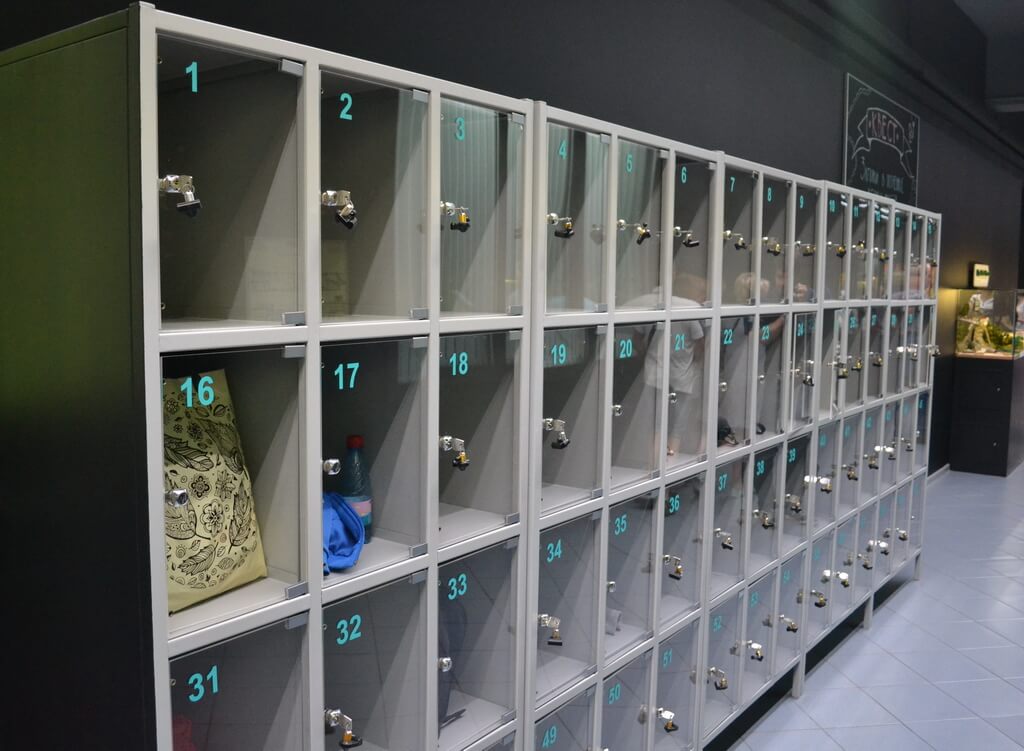
Locker rooms in the museum
A quickie tour of The Grand Maket of Russia will take two hours, although one can spend even six hours there. The tour will be interesting for everyone except babies.
The museum has an extended infrastructure. A café has 150 seats and a large variety of dishes, which are not expensive. A piece of pizza costs 59 rubles, a glass of cola – 59, a cup of coffee -100, a glass of lemonade made in the café – 10. Almost near every table in the café there is a power outlet for charging mobile gadgets. It is very convenient.
There is a special lifting platform for people using wheelchairs.
In the service center you can rent binoculars, monoculars (250 rubles), and an audio guide (also 250 rubles). A deposit of 500 rubles is required.
On the way out, you can buy a magnet with your picture (if you get into the field of view of the lens of the photographer in the hall). The cost of the magnet is 350 rubles.
A special place is equipped for parking strollers. Visitors are prohibited to pass with strollers.
There is a paid parking for cars, buses and motorcycles in front of the museum, parking a car costs 50 rubles per hour.
Every 30 minutes a movie in English about the history of the museum starts in a small cinema hall. We highly recommend watching it.
Some House Rules
Visitors are prohibited to:
— carry any animal regardless of its size;
— smoke even e-cigarettes;
— touch the miniature with hands or anything else;
— penetrate into the area under the layout.
The full list of the rules is available on the website of the museum.
The Layout Is An Artistic Image Of The Country, Not A Copy
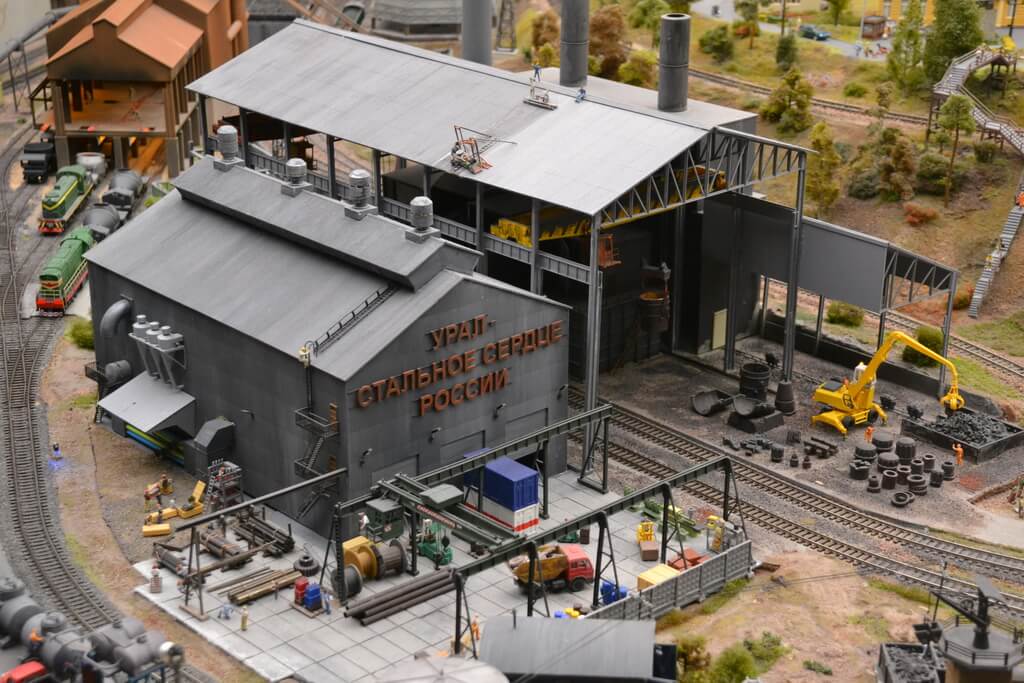
The Ural Region
The miniature layout of Russia is NOT a copy of the country, but its artistic image. All objects, cities, and regions on the layout have a generalized character and are conventionally divided in:
— the Far East;
— the Taiga region;
— the Northern region;
— Siberia;
— Trans-Urals;
— the Ural Mountains;
— the Caspian region;
— the Cisurals;
— the Southern region;
— the Central region;
— the Moscow region;
— the North-Western region;
— the Kaliningrad region;
— Saint Petersburg.
One will see no cities there, because the miniature layout is not a map.

A vision of Saint Petersburg
This grand layout of Russia can be compared with an actor. What does an actor do? He plays a role of a person, either fictional or real, not copying him but capturing the essence, the most distinguished features. At the same time, the actor can look different from the character whose role he plays.
This approach makes the journey along the “country” amazing, turning the “movie” from a documentary into a feature film.

A beach
Hectic Life of Characters on the Layout
What is happening on the layout resembles a TV serial distributed not in time but in space — all series do not follow one another, but are shown simultaneously on 800 square metres. Moving from the Far East to the Kaliningrad region or in the opposite direction or anywhere else, one can see scenes of detention of poachers, family quarrels, workers discussing something with the construction site supervisor, a traffic accident, tourists go hiking, commando training, fans at the biathlon competition, steelmakers, railway workers, passengers and what not.
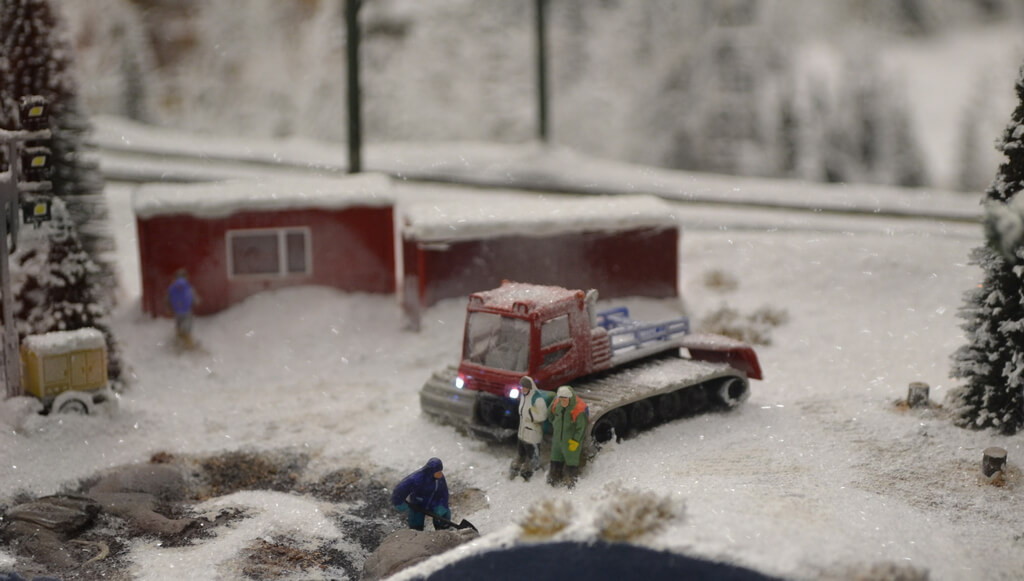
Eternal Frost
Oil derricks, a hydroelectric power plant in Siberia, ambulances, fire service vehicles, village with beautiful temples, dull provincial two-storied houses, powerful railway bridges over rivers with ship traffic, coal mining, cow grazing, a huge herd of reindeer – Russia is wide and varied. There are sketches for each profession, the day of which is celebrated in Russia, for each type of landscape, for all seasons, all sexes, and ages.
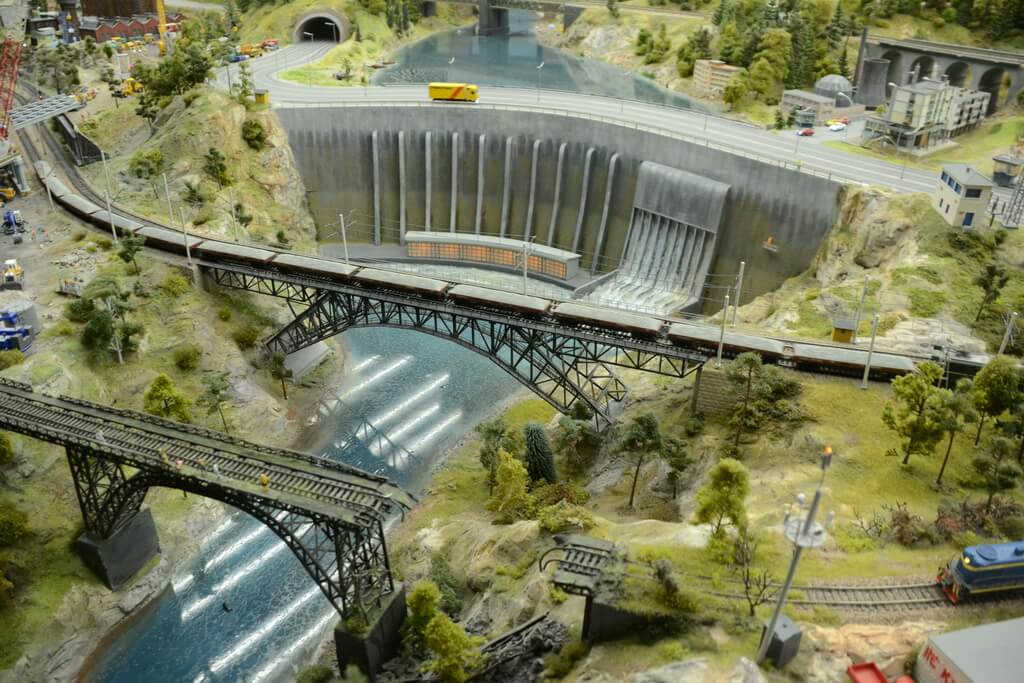
A Hydro Power Plant
Sometimes, one has the feeling that he or she is watching either a movie or a cartoon, but the names of characters are unknown. There is even a summer rainstorm, as well as different scenes of everyday life: a wife has kicked her husband out of the house, two neighbors on their balconies are discussing something quietly, while rescuers do artificial respiration and closed-chest cardiac massage to a man injured in a traffic accident.

Figures protest against the visitor’s hand touching
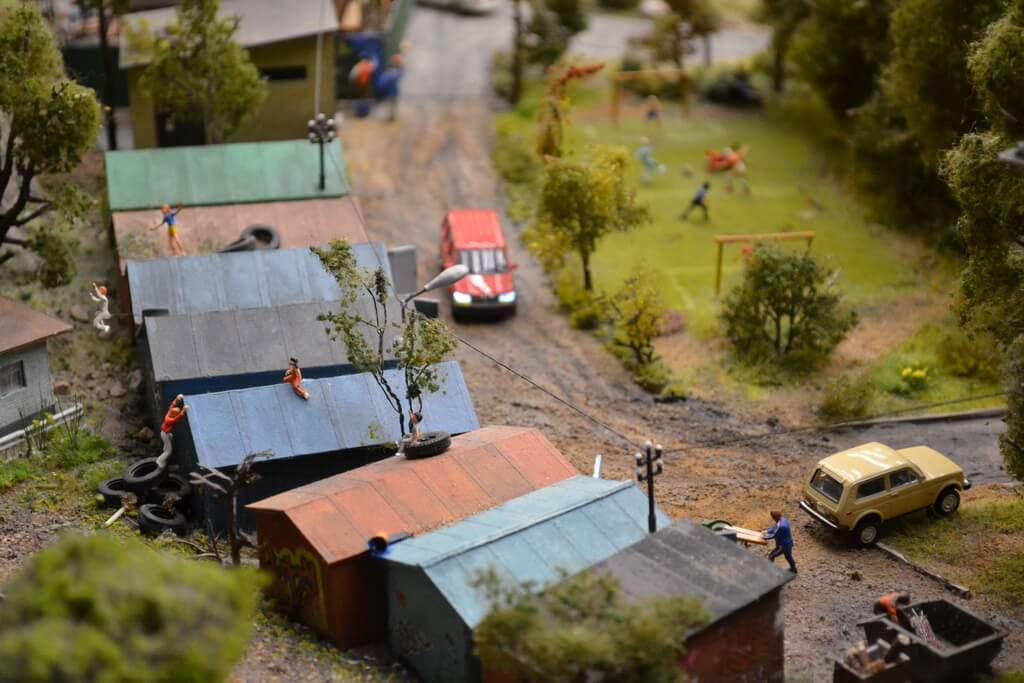
Life of the layout characters is similar to that of ordinary people
We think you know this guy quite well as his semi-naked macho-like body is being broadcast even more often than that of Arnold Schwarzenegger. It’s Vladimir Putin in person, a seemingly lifelong President of Russia, riding a bear. Riding on a bear is not prohibited in Russia, though not recommended. Do not try to repeat it!
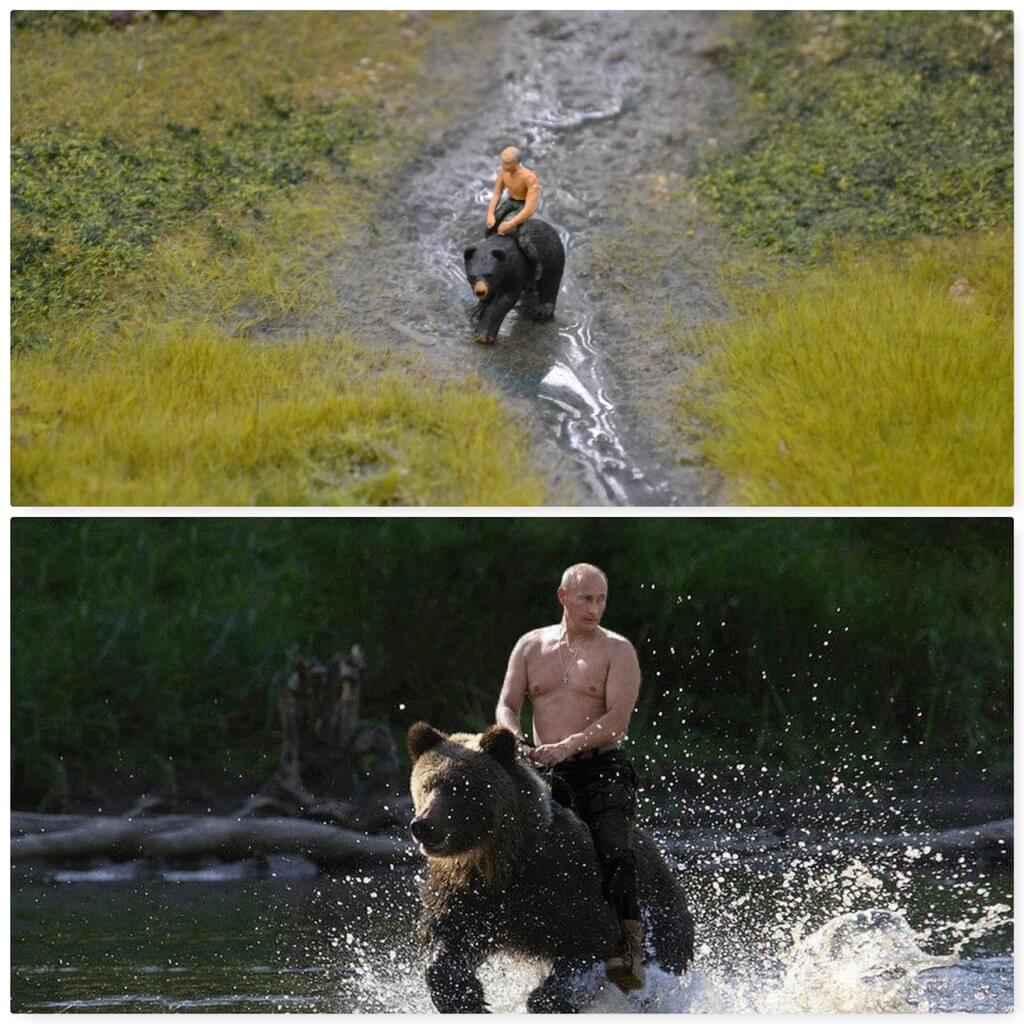
Who is it?
If you take an audioguide or are accompanied by a guide, you’ll learn a few particularly interesting episodes which you otherwise could miss. These are curious scenes, including playful and fantastic ones, bringing a bit of play and fun into the overall concept, for example, Bigfoot hiding in the forest hiding. A meeting has been arranged: the miniature residents of the layout are protesting against the visitors touching miniature figures and intervening in their lives.
Three large-scale scenes may surprise you: the episodes of the revolutionary period (1917 Russian Revolution), the Great Patriotic War, and… an UFO with aliens. Why are they on a layout, which focuses on the present, not the past or future? If you look closely, you will see that the brave tankers are located on a film set — a movie is being shot on the layout, and “aliens” are actors, and their weapons are stage props. This simple method helped the creators of the layout to encapsulate the key Russian events of the XX century.

Shooting the war
On the grand maquette in St. Petersburg, there are a lot of trains and road vehicles, which are always on the way. Cars, trucks, passenger and freight trains, special purpose railcars – both old made in the USSR and brand new «Sapsan» (a fast speed train operating on the Moscow – St Petersburg line), carrying everything from coal and pipes to agricultural machinery and excavators. Because of the high traffic density, the burden on the infrastructure is enormous: sometimes there are three (!) trains on one railway section, which rarely happens in real life. Add to it cars driving by – sometimes one doesn’t know where to look first.
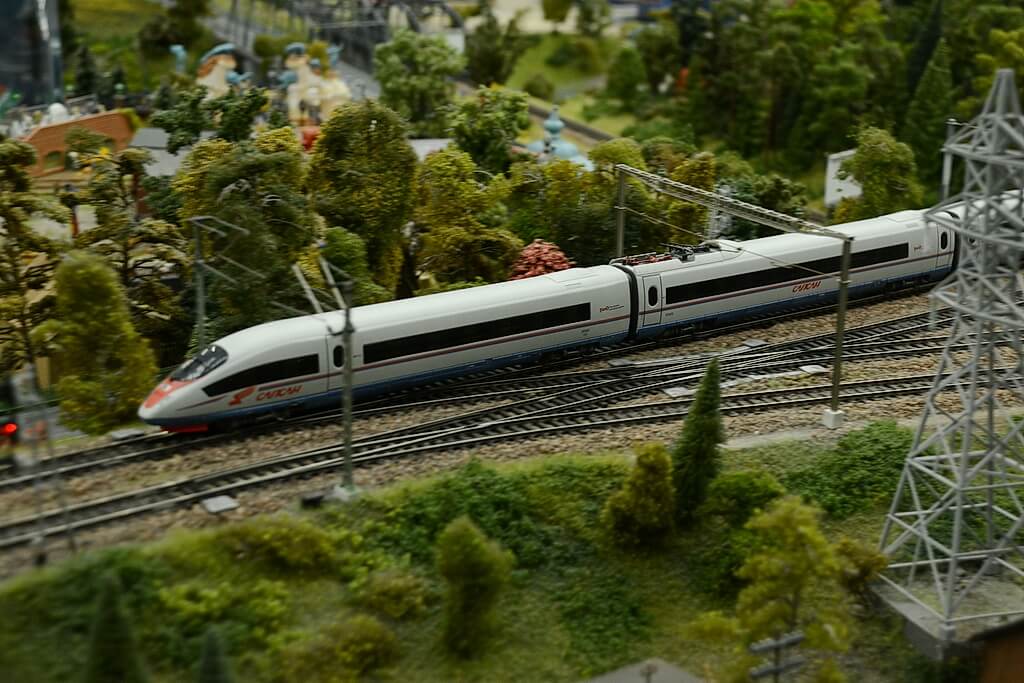
Sapsan train
Sometimes among the “midgets” and their homes one can see a “Gulliver” rising from under the ground – an employee of the Grand Maket appears from one of the 160 special “hatches” to wipe off the dust, fix a car or put a train back on the rails (this also happens). Looks great, especially when you have become accustomed to the small size of figures, and the perception has switched to the microcosm.
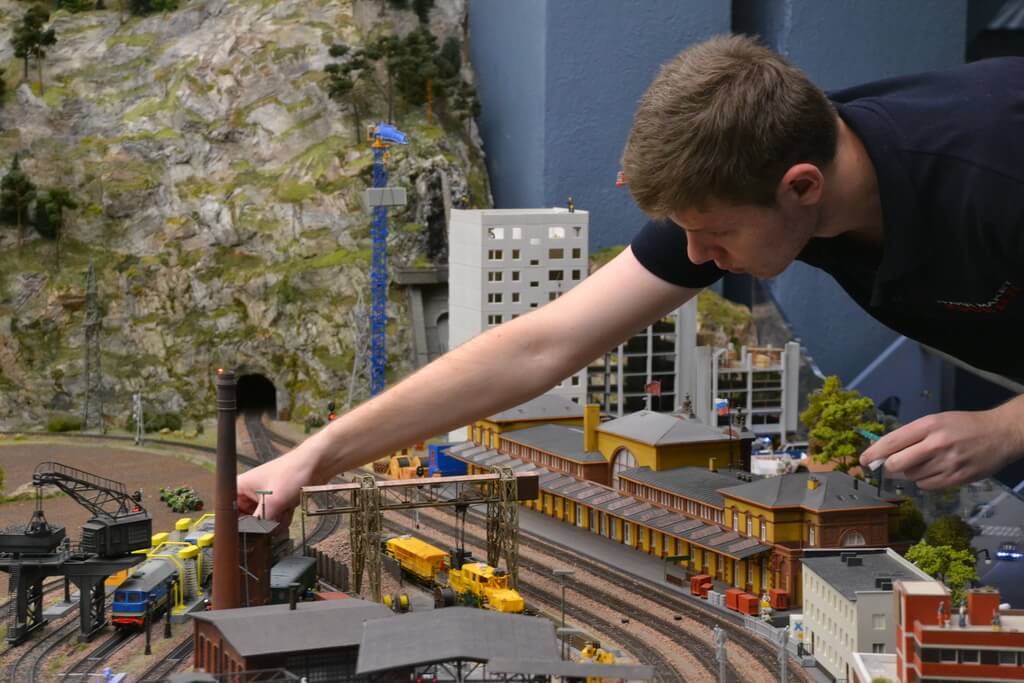
Clearing the layout
Amazing Technical Solutions
When developing the miniature, the organizers had to invent a lot to carry out their ideas.
For example, how to prevent collision of multiple vehicles moving sometimes at a considerable speed? How to “teach” them to overtake? How to “instruct” a bus that it needs to drive to a stop, not to a warehouse, and to “explain” the same only in reverse to a truck?
Moreover, cars do not drive on a single route as a commuter bus. They choose their own routes in accordance with the traffic situation just like unmanned vehicles that can move by themselves.
This is due to smart systems based on electromagnetic induction. Vehicles choose a route and decide whether to go, stand or overtake avoiding collisions. On the layout, the road traffic looks almost true to life, though drivers neither beep each other their car horns nor “wish good luck” to those turning from the second lane. Although, we do not exclude that somewhere there is a scene with an altercation on the road. The word combination “do not exclude” is the key: we spent three hours in the Grand Maket Russia interactive museum and we failed to see everything for sure.
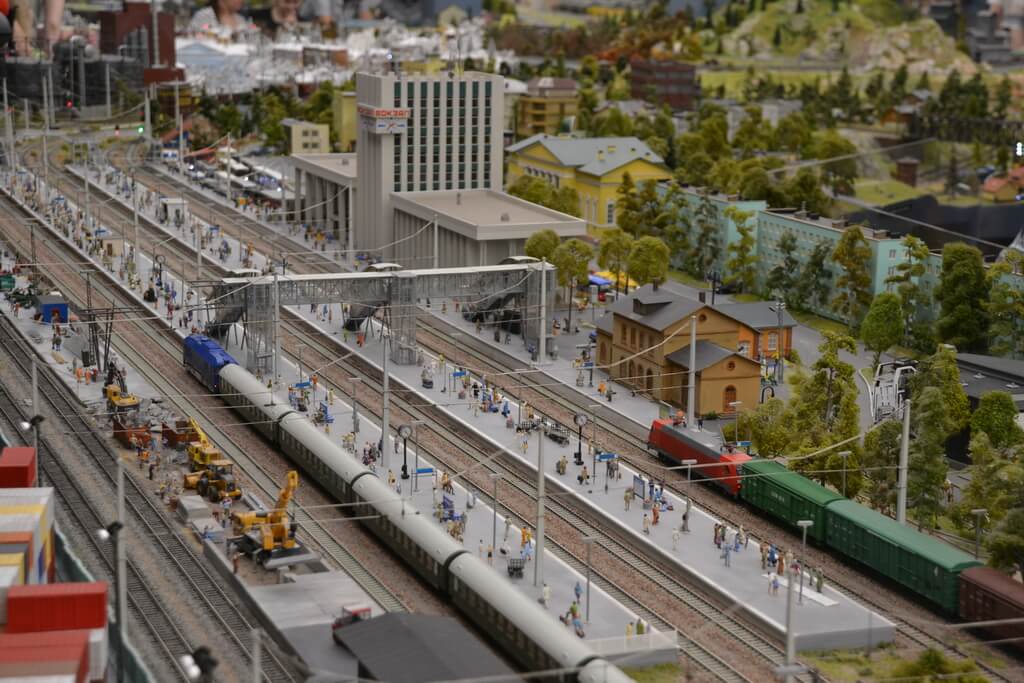
A Railway Station
Traffic Management Center
Train traffic is controlled by employees sitting in a specially equipped place called Traffic Management Centre. It’s located right in the center of the room, near the Ural mountains, and a glass wall separates it from visitors.
Another interesting innovation: a two-minute night falls on the whole layout every 15 minutes. It begins in the Far East and gradually gets to the Kaliningrad region. The overhead lights turn off, lights are switched on in the small windows of the tiny houses, on oil rigs, bridges, and other industrial structures, along the railway. The night landscape makes children gasp in delight, while adults snap their cameras and smartphones more actively.
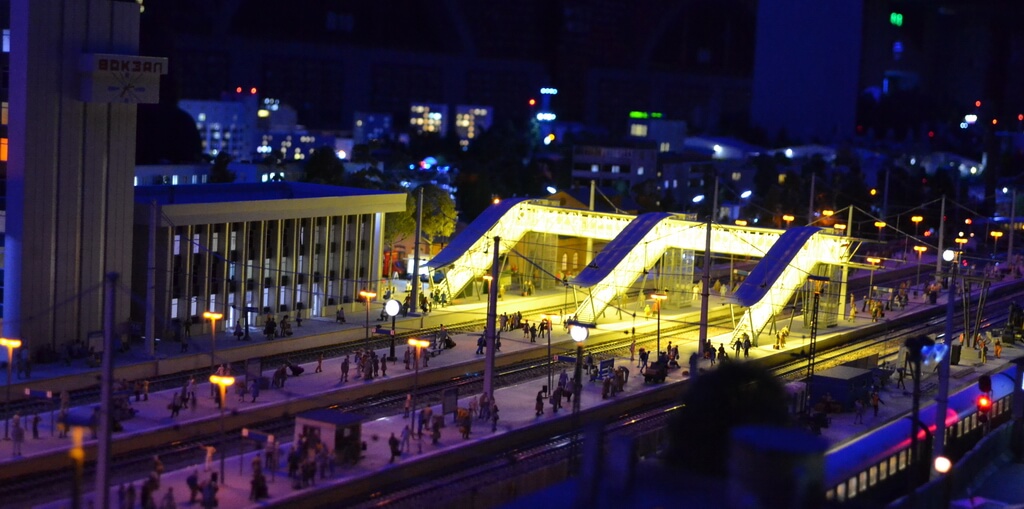
The night falls on the Grand Maket
On the way back, in front of the locker room, stop near the studio to look at layout specialists working behind the glass wall and shelves lined with figurines of vehicles and people.

Workshop of Grand Maket Russia
You can watch how craftsmen create new parts of Grand Layout.
By the way, the creators of The Grand Maquette in St. Petersburg were chosen by the creators of the Gulliver’s Gate miniature in New York to do the Russian part of 40 sq. m. (the total square of the Gulliver is 50,000 feet). Have a look at it here.